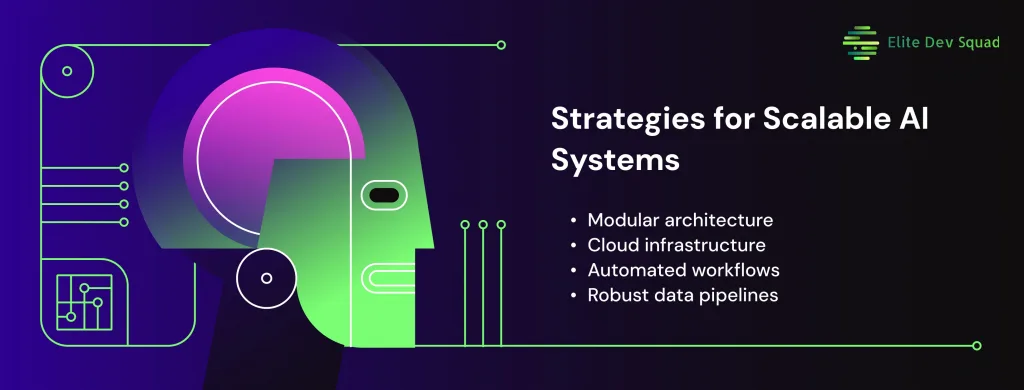
Artificial Intelligence (AI) is transforming industries rapidly. From optimizing logistics to personalizing healthcare, AI offers opportunities that were unimaginable a decade ago.
Despite their promise, many AI startups struggle in the early years, with a huge portion not reaching their third anniversary. These challenges aren’t usually caused by bad technology, but by weak strategy, poor product-market fit, unscalable systems, and ineffective team structures.
This guide provides a comprehensive roadmap for founders and product teams, combining detailed explanations, practical examples, and actionable steps. By following this approach, you can increase your chances of building a sustainable, scalable, and profitable AI startup.
Define the Problem Before the Technology
Success in AI begins with understanding the problem, not the algorithm. AI is a tool, and tools only matter if they solve real, pressing problems.
A common mistake is to develop a model or AI application first, then search for a problem. This approach leads to solutions that are technically impressive but commercially irrelevant. To avoid this, founders should focus on market validation, user research, and problem specificity.
Actionable Steps:
- Identify the real problem: Choose issues that are specific, measurable, and impactful. Example: Instead of “AI sales assistant,” create “an AI tool that predicts high-value leads for B2B sales teams.”
- Understand the target audience: Conduct interviews, surveys, and map user workflows. Use personas to visualize users.
- Validate market demand: Test assumptions with small experiments like landing pages, surveys, or prototype demos.
- Prioritize problems with ROI potential: Focus on pain points where AI can save money, increase revenue, or improve efficiency.
Define the Problem Before the Technology
Success in AI begins with understanding the problem, not the algorithm. AI is a tool, and tools only matter if they solve real, pressing problems.
A common mistake is to develop a model or AI application first, then search for a problem. This approach leads to solutions that are technically impressive but commercially irrelevant. To avoid this, founders should focus on market validation, user research, and problem specificity.
Actionable Steps:
- Identify the real problem: Choose issues that are specific, measurable, and impactful. Example: Instead of “AI sales assistant,” create “an AI tool that predicts high-value leads for B2B sales teams.”
- Understand the target audience: Conduct interviews, surveys, and map user workflows. Use personas to visualize users.
- Validate market demand: Test assumptions with small experiments like landing pages, surveys, or prototype demos.
- Prioritize problems with ROI potential: Focus on pain points where AI can save money, increase revenue, or improve efficiency.
Build a Minimum Viable AI Product (MVP)
Once the problem is clear, the next step is creating an MVP-a simplified but functional product to validate assumptions with real users. AI MVPs differ from traditional MVPs because they involve data collection, model training, and deployment considerations.
How to Approach AI MVPs:
- Simplify the model: Start with pre-trained models or smaller datasets to solve the core problem.
- Iterate fast: Use user feedback to refine the product rather than waiting for perfection.
- Focus on core functionality: Avoid adding unnecessary features in the first version.
- Measure impact: Define KPIs connected to business outcomes (e.g., time saved, accuracy improvements, or engagement).
Example: A predictive maintenance startup could initially focus on a single machine type using a small dataset, refining the model before scaling across multiple equipment types.
We handle the full AI MVP lifecycle-from defining the product and preparing datasets to training models and deploying solutions-ensuring a seamless, efficient workflow.
Get started today with a complimentary consultation to define your AI MVP strategy and accelerate your path to success.
Gather the Right Team
Even the most advanced AI cannot succeed without a competent, complementary team. Effective team composition is crucial, as AI development demands a balanced mix of technical, business, and operational expertise.
Core Roles:
- Data Scientists & ML Engineers: Develop, train, and optimize models.
- Backend Developers: Ensure scalable architecture and seamless data flow.
- Frontend Developers: Create intuitive dashboards and user interfaces.
- Product Managers: Bridge technical and business requirements, prioritize features, and manage roadmaps.
- Business & Marketing Leads: Identify markets, communicate value propositions, and drive adoption.
Tips for Team Building:
- Hire for complementary skills, not just technical proficiency.
- Encourage cross-functional collaboration and agile practices.
Consider outsourcing or outstaffing technical roles in early stages to reduce costs while maintaining quality.
Design for Scalability from Day One
Scalability is often the silent killer of AI startups. Many products work well with a small user base but collapse under growth. Scalability isn’t just about hardware-it’s about architecture, workflows, and data pipelines that can grow with demand.
Strategies for Scalable AI Systems:
- Modular architecture: Separate AI model serving, backend processing, and frontend interface to scale components independently.
- Cloud infrastructure: Use platforms like AWS, Azure, or GCP for flexible compute allocation and GPU usage.
- Automated workflows: Streamline data ingestion, model retraining, and deployment pipelines to reduce bottlenecks.
- Robust data pipelines: Ensure datasets are clean, labeled, and expandable.
Stress testing: Simulate high usage and large datasets to identify bottlenecks early.

Align AI with Business Strategy
AI models alone cannot drive adoption; they must be aligned with measurable business outcomes. Technical excellence without strategic alignment often results in products that look impressive but do not solve critical business problems.
How to Align AI with Business Goals:
- Define KPIs tied to impact: Beyond model accuracy, track outcomes like revenue growth, efficiency gains, or cost reduction.
- Integrate AI into workflows: Products should enhance existing processes rather than requiring users to adapt to AI.
- Focus on adoption: Build intuitive interfaces, clear dashboards, and actionable insights that users trust.
Monetization strategy: Price according to value delivered-subscription, pay-per-use, or enterprise licensing models.
Learn, Iterate, and Pivot
No AI startup can succeed without continuous learning and iteration. Market conditions, user behavior, and technology evolve rapidly, and startups must remain agile.
Steps for Continuous Improvement:
- Monitor metrics: Track model performance, user engagement, and business KPIs.
- Collect feedback: Conduct surveys, interviews, and usability tests regularly.
- Iterate: Refine models, improve interfaces, and optimize workflows.
Pivot strategically: Adjust product, market segment, or business model if assumptions fail.
Additional Considerations
Building a successful AI startup also involves careful attention to legal, ethical, and operational factors:
- Compliance & Data Privacy: Ensure GDPR, CCPA, and industry-specific regulations are followed. Implement strong data governance.
- Ethical AI: Address model bias, ensure fairness, and provide transparency in AI outputs.
- Funding & Investment: Secure early-stage funding to support MVP development and iterative improvement. Demonstrate traction before seeking larger investments.
Partnerships: Collaborate with domain experts, data providers, or other startups to enhance offerings and reach.
Conclusion
Building a successful AI startup in 2025 is not just about technology-it requires a comprehensive approach. Founders must start with a well-defined problem, build a focused MVP, assemble a strong team, design for scalability, align AI with business goals, and iterate continuously. Execution, strategic alignment, and adaptability are the real differentiators between startups that thrive and those that fail.
For founders looking for guidance, our team specializes in end-to-end AI product development-from MVP creation to scalable deployment. By combining technical expertise with strategic market insights, we help startups turn AI innovations into market-ready, business-impacting products.




